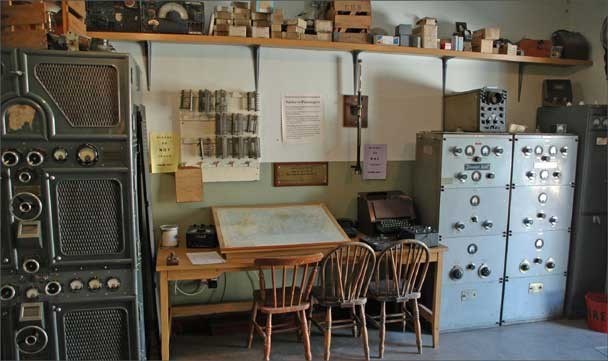By Mitchell Smyth
Meridian Writers’ Group
FOYNES, Ireland—As
you walk down the main street — pretty well the only street — of
this seaside village, it’s hard to believe that it once was as well known to
air travellers as Heathrow is today.
From 1939 until 1945
Foynes was a flying-boat port, the first touchdown for the giant Yankee
Clippers after a sometimes-hazardous journey across the Atlantic, and the last
port of call for passengers before setting off for New York on the westbound
journey.
Those heady days are
recalled in a museum located, appropriately, in the old terminal building. The
building itself dates to the 1860s — it was Foynes’s first public bar.
Offshore, in the Shannon River estuary, there’s a placid stretch of water, a
perfect “landing strip” for the airborne palaces that crossed the oceans before
the days of tarmac runways.
Their story is told in
pictures, artifacts and dioramas in the museum, which also includes the radio
room of the terminal and — the newest attraction — a full-scale replica
of a Boeing B-314 (the Yankee Clipper).
Margaret O’Shaughnessy,
the museum’s curator, says the Clippers could carry up to 40 passengers on the
transatlantic run. “It was the pinnacle of airplane luxury,” she says. “Every
passenger had a bed; the stewards pressed their clothes and polished their
shoes; and in the dining room they were served on fine china and drank from
crystal glasses.”
Such luxury didn’t come
cheap. The round trip fare was $675, about half the price of a small house at
the time. The people who could afford it — or could put it on an expense
account — were tycoons, movie stars, military planners (the Second World
War was raging, but Ireland was neutral) and diplomats.
The museum explains that
over the Atlantic there was what the pilots called a “point of no return,”
where the captain had to decide if there was enough fuel to complete the
journey (this varied according to weather) or to turn back.
(The Clipper route was
Long Island Sound, New York; Shediac, New Brunswick; Botwood, Newfoundland;
Foynes; and Southampton, England, or vice-versa. The trip took about 24 hours.)
One of these aborted
flights has a footnote in history. Late one night in 1942 a group of passengers
who had taken off from Foynes returned in a rainstorm. In the terminal, chef
Joe Sheridan made them coffee and to cheer them up he added sugar and a healthy
belt of Irish whiskey and topped it with thick cream. “Is this Brazilian
coffee?,” asked one of the passengers. “No sir,” said Sheridan, deadpan,
“that’s Irish coffee.”
And Irish coffee it is to
this day. And that’s why every fall Foynes sponsors an Irish coffee-making
festival, where bartenders from all over the world compete. The prize is handed
over by Irish actress Maureen O’Hara, the museum’s patron, whose late husband,
Capt. Charles Blair, flew the last flying boat out of Foynes on Oct. 22, 1945
and a few days later flew a land plane into the new Shannon International
Airport, across the estuary from Foynes. The age of the transatlantic flying
boat was over.
ACCESS
The Flying Boat Museum is open April through October. For more information visit its website at www.flyingboatmuseum.com




